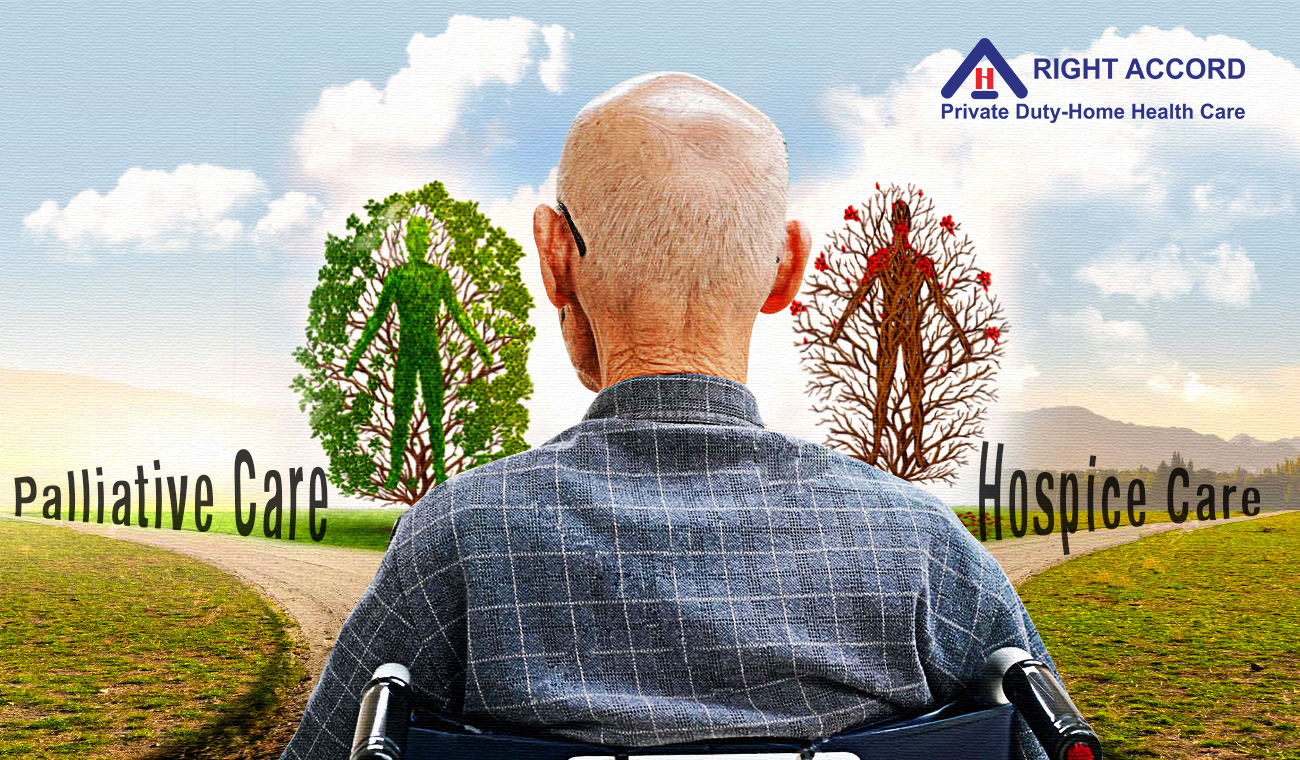· 8 min read
Hospice Care and Palliative Care What is the Difference?
Some elderly have terminal health conditions that can lead their family to choose between Hospice or Palliative Care. Here's what all you need to know about it.

By: Rosemarie Tamunday Casanova — RN, BSN, MHA
In the year 2021, the population of people above 65 years is at an all-time high, many thanks to cutting-edge medicine, innovative pharmaceuticals and better living standards. Unfortunately, living longer does not always mean being healthy. The same longevity has also presented a healthcare challenge as more people are having to live with age-related health conditions such as cancer, diabetes and cardiovascular problems.
Sometimes, these conditions get to a terminal stage and those who suffer from it, as well as their loved ones, have to prepare for the inevitable while giving the sick person as much valued time and care as possible. In so doing, they find the help rendered by professionals in hospice and palliative care invaluable. It is these health care providers that take care of people at the end stages of their lives.
Hospice and palliative care have come a long way since their inception and more strides can still be achieved. It is therefore, a goal of this year’s awareness program to help people understand the difference between both varieties of healthcare and how important they are to society.

The awareness program also hopes to help improve the quality of life for people that are affected by serious and life -threatening illnesses and uphold their right to be cared for in ways that best suit them. Each year, a wave of musical concerts are organized by concerned bodies to mark the world hospice and palliative care day.
These concerts, known as Voice for Hospice, provide a platform for enjoyment and fun for those who attend, while passing across a strong message.
Origin of hospice and palliative care
In all of human history, people have given varying degrees of attention and care to those in the final stages of their life as a result of illness. Mostly, these tasks have been borne by women in the society and often on an individual level without any form of organized arrangements and without these women even having knowledge of each other’s contributions. These women, usually out of their own volition or social constructs, offered to take up these roles.
By the turn of the nineteenth century, organization in hospice care began to take shape especially by religious bodies in different nations. By the twentieth century, The Sisters of Charity, for example, in Ireland (which began by taking care of the poor, sick and impoverished in the streets of Dublin), became a well organized group, managing many facilities across the world. One of such facilities is the St. Joseph’s Hospice.
The tale of Hospice care will not be complete without also mentioning the contributions of Dr. Saunders who, in 1967, directed the St. Christopher’s Hospice in England. It was in this period that she spear-headed the development of what is now known as the philosophy of end-of-life care and hospice, an idea that has caught on with the rest of the world.
Although during Dr Saunders’ time, most of the hospice care givers were still volunteers, it was in 1987 that a hospital-based palliative care center was established at the Cleveland center by Dr. Declan Walsh. It would still take almost two more decades before the first official world hospice and palliative care day would be marked and celebrated in 2005, growing strong each passing year.
In 1989, Sheila Hurton, in a bid to raise funds as well as create awareness to the public about the Princess Alice Hospice located in Esher, Netherlands, organized a concert. The first single concert she organized was titled Come and Sing and ever since, world hospice and palliative care day has grown to become a global campaign, marked and celebrated by care homes and health care providers in every part of the globe. The date set out for this commemoration is the 9th of October .
As we commemorate this year’s awareness, here are some of the things that we should know about hospice and palliative care.

Photo by Tim Cooper Unsplash
Is there a difference between hospice and palliative care?
Yes there is. Although the primary aim of both palliative and hospice care is to relieve pain and symptoms, their particular goals appear to be different.
Hospice Care
On the one hand, hospice care is the provision of comfort without the intention to cure. This is because, people managed under hospice care would have usually exhausted all curative options available, with their cases more or less terminal. In other cases, the patient in question may have chosen not to follow through on the recommended treatment option either for personal reasons or because the side effects of the treatment are perceived to outweigh the benefits.
For example, a patient with a malignant brain tumor may choose to live out the rest of their days rather than opt for brain surgery that could possibly leave them in a state of coma for a longer period of time. It is in such cases as these that hospice care is given.
Palliative Care
Palliative care aims to relieve the symptoms, mental and physical stress of illness that are serious or even life-threatening. The subtle difference here is that, unlike hospice care which commences at the end of every other management option, palliative care can begin with the hope of a curative end in consideration. It can be pursued from the commencement of diagnosis, through out the phase of curative treatment, follow-up appointments and down to the end-of-life stage.
The message is to understand that both aspects of care are equally important and those who dedicate their time and effort into providing them should be appreciated. This is the aim of the awareness.

Photo by Konstantin Hopp on Unsplash
How can I be a part of this awareness?
Here are ways you can observe and participate in commemorating the day this year:
Know the theme
“Leave no one behind” is the theme of this year’s awareness. Everyone deserves the privilege of having hospice care in times of dire health needs. We can decide to take it upon ourselves, through the knowledge acquired from the awareness, to ensure that everyone around us who truly needs such care know how to go about accessing it.
Attend an event
Attend the Voices of Hospice concerts and have fun listening to beautiful and entertaining music. Many of such music concerts will be organized all around the world and you can find one closest to you. A quick search on www.thewhpca.org/ will give a comprehensive list of where these concerts are due to take place.
Stay linked to the right information
One of the best ways to do this is to subscribe to the regular newsletter of the world hospice and palliative care awareness committee. On this platform, you will be sure to also find materials that can help with online creation of awareness. Interested participants can help reposting posters and awareness images using their social media platforms. The hashtags to follow and use are #WHPCD21 and #LeaveNoOneBehind21.

Lend a hand
Remember we discussed the origins of Hospice and palliative care and how much of volunteer service have gone into establishing this organization. Volunteering has also continued to be one of the engines that have kept it going till date. You can decide to participate by volunteering to help provide help to those who need them in palliative care facilities.
Appreciate care givers
Taking care of terminally ill patients is never an easy task and so Hospice care is one job that requires a great amount of patience, dedication, compassion and time. Many people who provide these services constantly need to stay motivated and we all can be that source of motivation to them by doing the simple things such as saying “ Thank you”.
Organize a visit
This is a great opportunity to organize a visit to a home or a care facility for your staff, family or students. With trips and engagements like these, service and compassion can be imbued into other people to appreciate life and service to humanity.
Donate to the cause
Your financial contributions help in planning these annual concerts and other awareness packages that come with it. You can either donate to the committee or to a verified body near you. To make donations, you can visit www.thewhpca.org/donate/ .
Be a part of the people changing the world one awareness at a time. You too can be a tool in spreading the awareness as we mark this year’s and the ones to come.
Other Related Resources
Hospice Care vs. Palliative Care
Does Medicare Cover Hospice?



